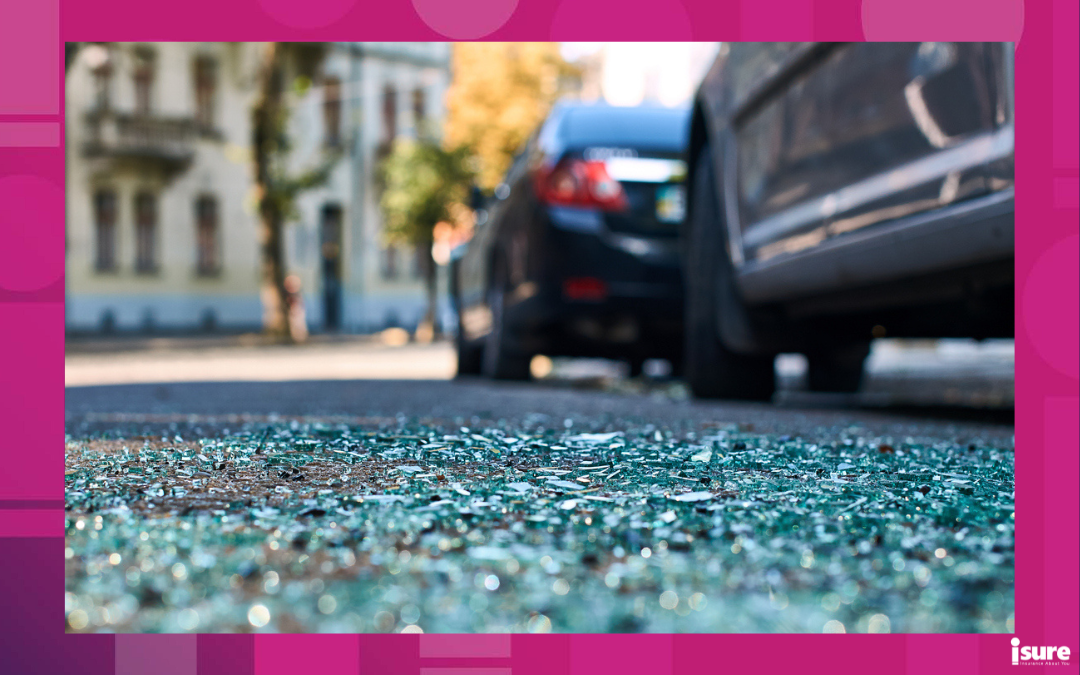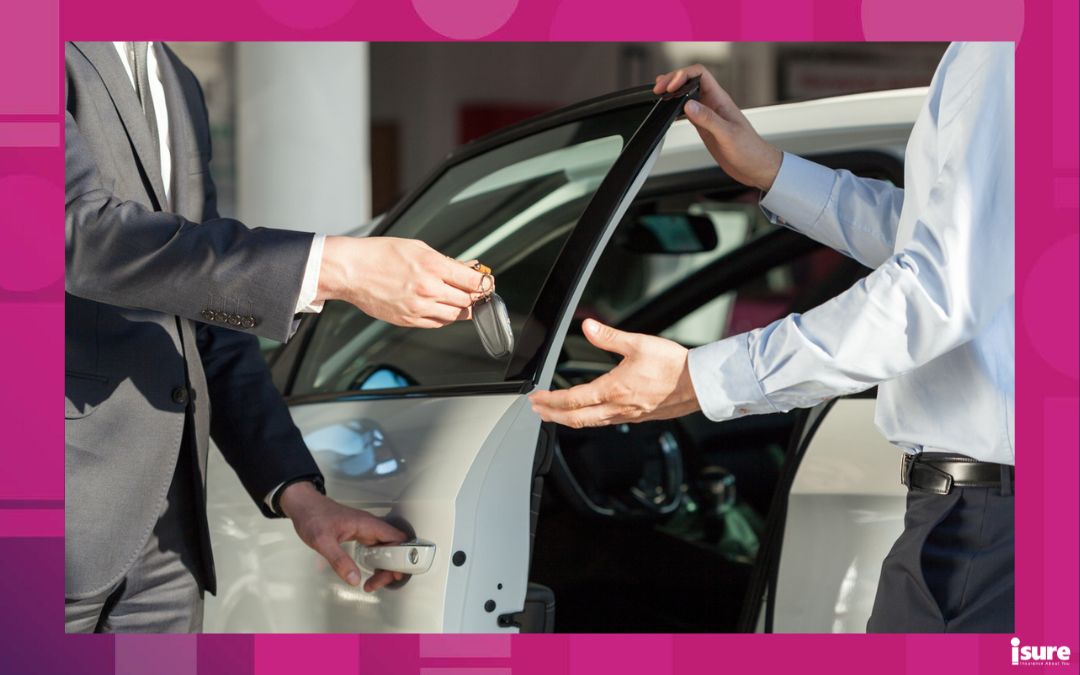If your car has been in an accident, it can negatively affect its value — even if your car’s been repaired and shows no signs of damage. This depreciation in your car’s worth is called diminished value. Let’s take a closer look at how being in an accident contributes to what your car is worth.
What exactly is it?
Diminished car value refers to the perceived loss of value of a vehicle following a collision-related repair. This is assuming the vehicle is repaired to its original condition. Unfortunately, your vehicle will now have the stigma of being in a collision. When a car goes through a major repair or rebuild after a collision, its resale price will inevitably take a hit in value. This is even if the repairs are done perfectly and the car is restored completely.
What are the different types of diminished car value?
1. Inherent diminished value
Inherent diminished value refers to the perceived loss of value of a vehicle following a collision-related repair. The stigma of having been in an accident reduces the value you may receive for the vehicle when you try to sell it or trade it in. In comparison to what you would have gotten before it was involved in a collision, the difference can be remarkable. Most buyers distrust the quality of a vehicle that is involved in an accident.
Instantaneous diminished value is how much your car is worth immediately after an accident. Your car’s immediate post-accident condition is when your insurer decides the cost of repairs to restore your car to its original condition, not necessarily its original value.
2. Repair-related diminished value
Repair-related diminished value occurs when the quality of repairs is in question. Examples of this include:
- If the paint colour is not a perfect match
- If generic or aftermarket parts are used rather than name-brand ones
- If the car has an extra rattle when being driven that it didn’t have before
In these cases, the quality of the repair leaves a definite loss in value on the vehicle beyond the perceived loss that already exists from a collision. This decrease in value is related to poor or negligent repairs your vehicle receives.
17C – Diminished Car Value Formula
Most insurance companies use a standard calculation called the 17C Diminished Value Formula to determine the value of a vehicle after it’s been in an accident.
Value of the vehicle x 10% cap x damage multiplier x mileage multiplier = Diminished value
How the 17C method works to calculate car value after an accident
If your vehicle is in an accident and you want to complete the write-off calculation, the 17C diminished value method can give you an accurate ballpark estimate of worth. Remember that your insurance company may not necessarily use the 17C method. However, it is a common enough formula to help give you an idea of how a car insurance company may estimate your car’s value after an accident.
1. Determine your car’s value, pre-accident
The easiest way to check your vehicle’s value is on sites like Carfax, Canadian Black Book or Autotrader.ca.
2. Apply a 10% cap
Insurance companies assume your car won’t depreciate by more than 10%. So, start with this number and apply multipliers to decide the final percent change.
3. Apply a damage multiplier
Your insurance company will assess the damage to your car and apply a number from zero to one indicating the severity of the damage. This number is multiplied by the 10% cap.
- 1.00 = Severe structural damage
- 0.75 = Major damage to structure and panels
- 0.50 = Moderate damage to structure and panels
- 0.25 = Minor damage to structure and panels
- 0.00 = No structural damage or replaced panels
4. Apply a mileage multiplier
Your car’s value is further adjusted to reflect the car’s mileage.
- 1.0 = 0–29,999 kilometres
- 0.8 = 30,000–64,999 kilometres
- 0.6 = 65,000–94,999 kilometres
- 0.4 = 95,000–129,999 kilometres
- 0.2 = 130,000–159,000 kilometres
- 0.0 = 160,000+ kilometres
Direct loss vs. indirect loss compensation
If you are a Canadian car owner, being compensated for the diminished value of your car is challenging. Auto insurance policies here are designed to only cover direct losses. That means insurance companies have to pay for repairs to your vehicle to restore it to its pre-collision condition or declare it a total loss if that is the lower-cost option. However, any reduction in your car’s value after repairs is considered an indirect loss and is, unfortunately, not covered under your policy. If repairs end up costing more than the car’s value, then your insurance company will usually opt to write it off. But the decision is entirely up to the insurance company, which has the right to send the vehicle for repair or rebuild rather than offer a payout. Often, they will choose to repair it because that is the cheapest option.
Whether or not diminished value is a “direct loss” continues to be debated in and out of the courts in Canada. But historically, insurance companies have a tendency to settle out of court when these cases do come up.
Is there any diminished coverage available in Canada?
Unfortunately, no. Because there is no official diminished value coverage in Canada, you will have to take matters into your own hands when it comes to recouping significant losses in value on your car. There have been some cases where Canadian insurance companies quietly pay out diminished value claims. But where they are not able to, drivers have had to fight the claims in court by suing either their own insurance providers or the at-fault driver’s provider. Before you ask your insurance provider to compensate you for the loss in value to your vehicle, or decide to take someone to court, make sure you obtain a report with a dollar amount of value and loss. It can help to convince the insurance company to pay.
FAQs about Diminished Value
Is the loss from a car accident covered by my car insurance?
No. Unfortunately, that loss is not covered by car insurance providers in Canada. According to the Insurance Bureau of Canada, no province or territory in Canada offers similar coverage for diminished value or accelerated depreciation. Moreover, insurance rules differ from province to province, and this can also create challenges, even if you want to take your case to court. In Ontario, for example, no-fault insurance prevents you from suing the driver who caused the accident for compensation for your vehicle’s lost value.
Diminished value does exist. You may be offered up to 50% less by a prospective buyer (private or commercial) for a vehicle that has been damaged and repaired, even if the repair was completed to a factory standard.
How would people know my vehicle was in an accident?
Owners are required to disclose damage to vehicles over $2,000 to potential buyers. Plus, vehicle history reports from companies like Carfax, Carproof, and Transport Canada, are also available for prospective buyers of a used vehicle. They can check for themselves if it has sustained major damage.
When will my car be considered a write-off?
Each insurance company sets its own standards to determine when a car is considered ‘totalled’. After your car’s value has been determined after an accident using formulas, like the 17C method, the decision will be made on whether or not to write off the car based on how much repairs will cost. Typically, if the value of the repairs is around 50% of the value of the car, the car will be considered a write-off. Companies might have higher or lower thresholds, and some may use a total loss formula.
What can I do if my car is worth less after an accident?
- Make a claim for diminished value. If your province or territory allows it (as is the case in BC and Alberta), you can recover some of your car’s lost value.
- Pick a payout over repairs. If your car isn’t declared a total loss (repairs cost more than the car is worth and fall close to the value of a total loss claim), you can try to make an appeal for a total loss decision instead. You’ll get paid cash for your car’s pre-crash value instead of getting a car that’s worth less after getting repairs.
- Drive your car until it’s no longer driveable. If you don’t sell your car, you won’t have to worry about diminished value.
- Avoid a salvage title. You’ll typically have the choice to buy back your car on a salvage title if it’s declared totalled. But your car will be worth even less in this case since it’s not repaired and carries a salvage title.
The bottom line on diminished car value
Not all insurance companies will use the same calculations to arrive at the diminished value of your car post-accident. But using the 17C formula will give a good starting point. Knowing how much your car is worth helps you prepare to sell your car or decide how much car insurance you’ll need. Be sure to speak with one of our isure representatives if you are involved in a collision. Additionally, we will be happy to discuss more about your vehicle’s diminished car value before proceeding to sale or salvage.




